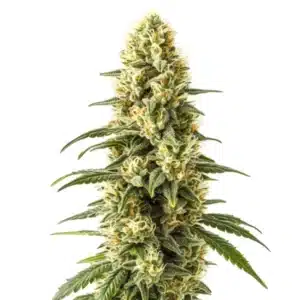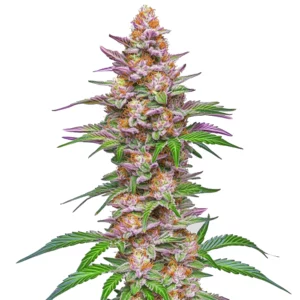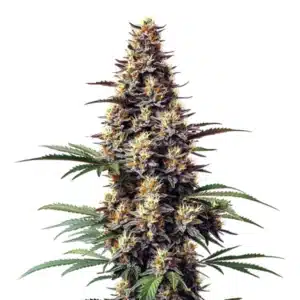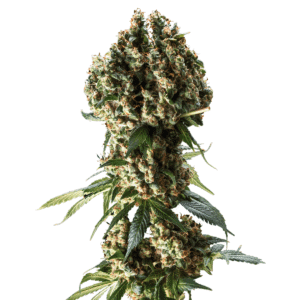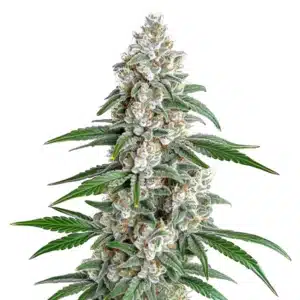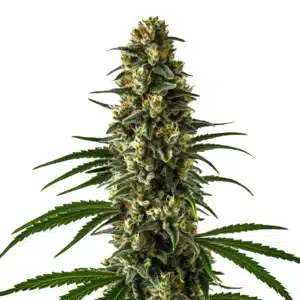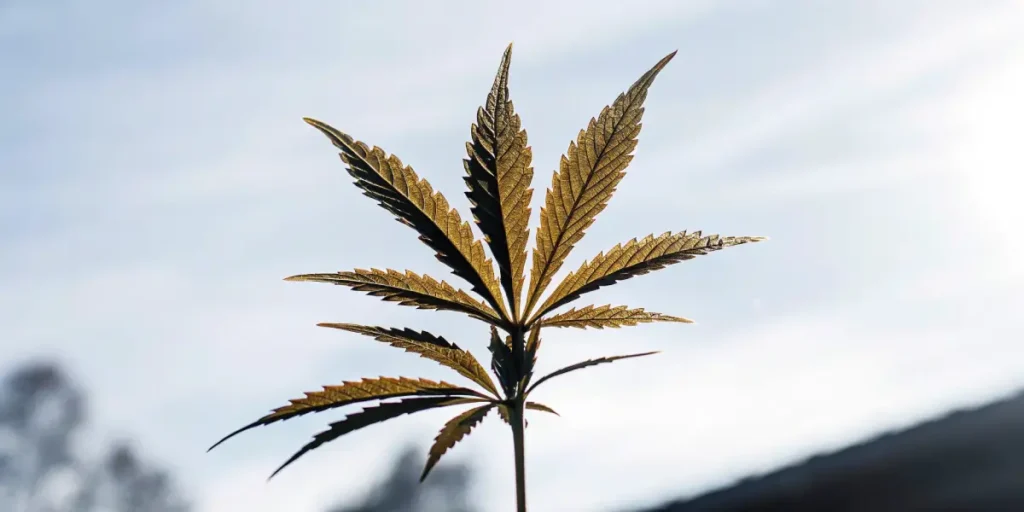
Plant Hormone Signaling Cannabis
Plant hormone signaling in cannabis is an intricate dance that influences every aspect of growth. Hormones, the chemical messengers within the plant, guide various processes from seed germination to the flowering stage. For both novice and seasoned growers, knowing these signals can lead to healthier plants and better yields.
In the world of cannabis, hormones like auxins, gibberellins, cytokinins, ethylene, and abscisic acid play crucial roles. They determine how a plant grows, responds to stress, and ultimately how much bud it produces. For instance, auxins help in root development, a critical factor for plants to absorb nutrients efficiently.
Recommended Strains
Afghan Hash Plant Regular
-
THC: 18% - 22%
-
Type of seed: Regular
-
Phenotype: 10% Sativa / 90% Indica
-
Flavor: Citrus, Earthy, Floral, Woody
-
Day to flower: 6 - 8 weeks
3 Kings
-
THC: 14% - 19%
-
Type of seed: Feminized
-
Phenotype: 70% Sativa / 30% Indica
-
Flavor: Citrus
-
Day to flower: 8 - 10 weeks
Cannabis hormone signaling pathways are complex yet fascinating. Each hormone can act independently or interact with others to produce specific effects. This interaction is vital for growers to master, ensuring optimal plant health and maximizing yield. Let’s delve deeper into how these hormones function and their impact on cannabis cultivation.
Cannabis Plant Hormone Signaling Pathways
The pathways through which plant hormones signal in cannabis are like highways for growth and development. Hormones travel through these pathways to deliver messages that affect everything from cell division to flowering time. Auxins, for example, move down the stem to stimulate root growth, crucial for nutrient uptake.
Another important pathway involves gibberellins. These hormones are responsible for stem elongation, making them essential for plants to reach towards light. For growers, balancing gibberellins is critical. Too much can lead to tall, spindly plants, while too little can stunt growth.
Knowing cannabis plant hormone signaling pathways is key to optimizing plant performance. These pathways not only regulate growth but also mediate responses to environmental stimuli. By manipulating pathways, growers can enhance plant resilience to stressors like drought and pests, leading to healthier plants.
Moreover, the interplay between different signaling pathways can have a profound impact on cannabis development. For example, the integration of auxin and cytokinin pathways can dictate whether a plant prioritizes root or shoot growth. This balance is crucial for adapting to various growing conditions and maximizing yield potential.
- Auxins: Key for root development and phototropism.
- Gibberellins: Promote stem growth and seed germination.
- Cytokinins: Encourage cell division and shoot formation.
- Ethylene: Affects fruit ripening and leaf drop.
- Abscisic Acid: Regulates stress responses and seed dormancy.
Promos & Deals
Effects of Plant Hormones on Cannabis Growth
Hormones affect cannabis growth in profound ways. By manipulating these hormones, growers can influence plant size, shape, and productivity. Auxins, for instance, are used to encourage bushier plants. Topping, a common technique, relies on auxin redistribution to stimulate lateral growth.
Another example is the use of cytokinins, which promote cell division. This hormone is particularly important during the vegetative stage, ensuring the plant develops robust foliage. For growers, knowing how to leverage cytokinins can increase the plant’s ability to photosynthesize effectively.
The effects of plant hormones on cannabis growth extend to the plant’s ability to adapt to its environment. For instance, the right hormonal balance is crucial for a plant’s response to light and nutrient availability, which in turn affects growth rate and overall health.
Additionally, hormones like abscisic acid play a vital role in mediating growth under stress conditions. By fine-tuning hormone levels, growers can ensure that plants not only survive adverse conditions but also continue to thrive and produce high-quality yields.
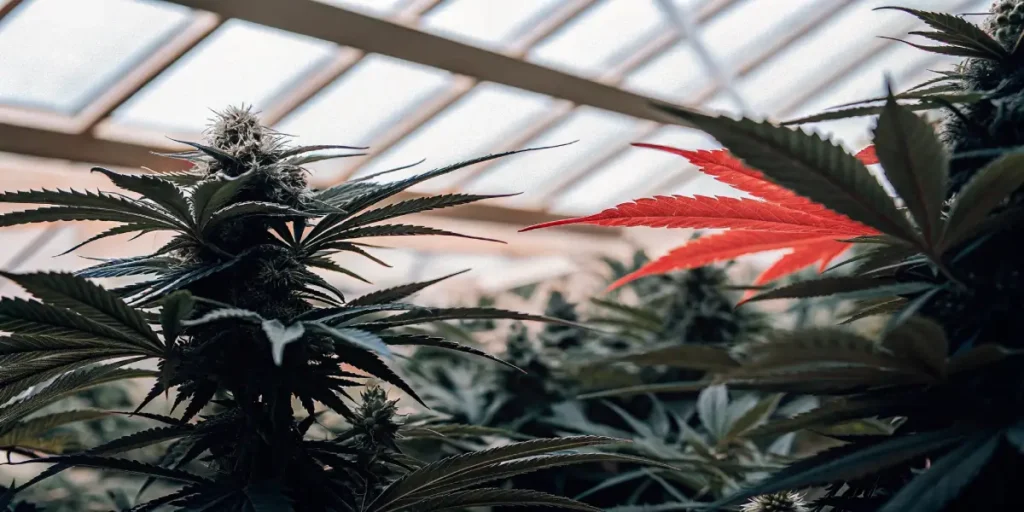
Cannabis Yield and Hormone Signaling
Maximizing cannabis yield often depends on skillfully navigating hormone signaling. The right balance of hormones leads to larger, more potent buds. Growers often use techniques like low-stress training (LST) to manipulate hormone levels, optimizing light exposure and airflow to the plant.
Abscisic acid (ABA) is another hormone affecting yield. During times of drought or heat, ABA levels rise, signaling the plant to conserve water. While this helps survival, it can also slow growth. Balancing ABA with other hormones ensures plants remain vigorous even under stress.
Knowing cannabis yield and hormone signaling allows growers to refine their cultivation methods for optimal results. By controlling hormone levels, they can influence the density and size of the buds, which directly impacts the final yield and quality of the crop.
Moreover, advanced techniques like selective pruning and defoliation can enhance hormone distribution throughout the plant. This method ensures that energy is focused on the most productive parts of the plant, leading to increased resin production and cannabinoid content.
- Low-Stress Training: Encourages light exposure and bud development.
- Pruning: Adjusts hormone levels to promote desired growth patterns.
- Defoliation: Enhances air circulation and light penetration.
For those growing strains like Original GSC from Blimburn Seeds, managing these hormone signals is crucial. Proper techniques can lead to a bountiful harvest rich in THC and other cannabinoids.
Plant Hormone Interactions in Cannabis Cultivation
The interactions between plant hormones in cannabis cultivation can be likened to a symphony. Each hormone plays its part, contributing to the overall health and productivity of the plant. Sometimes, these interactions can be synergistic, while at other times, they might counteract each other.
For instance, the balance between auxins and cytokinins determines the plant’s growth pattern. High auxin levels promote rooting, while cytokinins encourage shoot growth. By managing this balance, growers can shape their plants to optimize space and light usage.
Plant hormone interactions in cannabis cultivation are essential for creating a harmonious growing environment. These interactions influence various plant processes, from nutrient uptake to photosynthesis, ultimately affecting the plant’s vitality and yield.
Growers who master hormone interactions can create tailored growth strategies that meet the specific needs of their cannabis plants. This approach not only enhances growth efficiency but also improves the quality of the harvest, ensuring a high return on investment.
Hormone interactions also play a role in stress responses. When a plant experiences stress, such as heat or pest attacks, hormone levels shift. For example, increased ethylene production can trigger defense mechanisms. Strains like Blue Dream can benefit from careful hormonal management to enhance their resilience.
Role of Hormones in Cannabis Plant Stress Response
Hormones play a critical role in how cannabis plants respond to stress. Abscisic acid, often called the “stress hormone,” helps plants cope with environmental challenges. When faced with drought, ABA levels rise, closing stomata to reduce water loss.
Ethylene also contributes to stress response. In high-stress situations, ethylene production increases, which can lead to leaf drop and reduced growth. However, managing this hormone can prevent such negative outcomes, keeping the plant healthy.
The function of hormones in cannabis plant stress response is pivotal for maintaining plant health under adverse conditions. By modulating hormone levels, growers can help plants adapt to stressors like temperature fluctuations and pest invasions, ensuring continued growth and productivity.
Effective hormone management can also enhance a plant’s immune response, providing a natural defense against diseases and pathogens. This proactive approach not only safeguards the plant’s health but also improves the overall quality and yield of the cannabis crop.
Gibberellins, while often associated with growth, can influence stress responses too. By knowing these hormonal interactions, growers can create environments that minimize stress and promote growth. Strains like Granddaddy Purple are known for their robust growth, aided by precise hormone management.
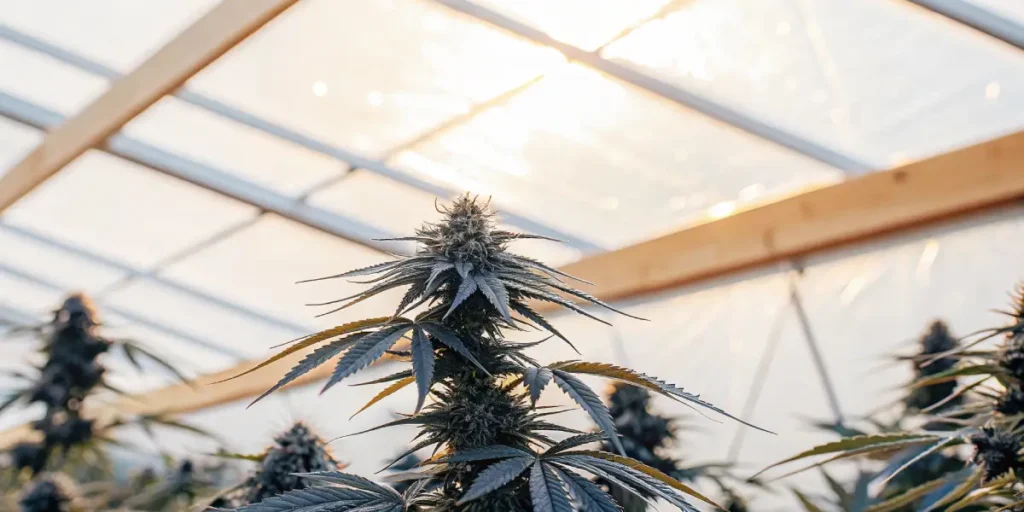
FAQs about plant hormone signaling cannabis
How do hormones affect cannabis plant yield?
Hormones significantly impact cannabis yield by regulating growth and development. Auxins and cytokinins, for example, are key in determining plant structure and bud production. Properly managed, these hormones can lead to higher yields and more potent buds.
Growers who understand hormone interactions can use techniques like topping and low-stress training to enhance yield. These methods redistribute hormones, encouraging more bud sites and larger flowers. This is especially beneficial for strains like Original GSC, known for its generous yields.
The influence of hormones on cannabis plant yield is profound, as they regulate critical growth phases. By optimizing hormone levels, growers can ensure that plants allocate resources efficiently, resulting in a robust and productive harvest.
Furthermore, hormone manipulation can enhance the plant’s ability to develop dense and resinous buds, which are highly desirable in the cannabis market. This targeted approach can significantly improve both the quality and quantity of the final product.
What is the impact of stress hormones on cannabis plants?
Stress hormones like abscisic acid and ethylene play crucial roles in how cannabis plants cope with environmental challenges. When stress occurs, these hormones signal the plant to take protective measures, such as conserving water or dropping leaves.
While these responses can aid survival, they may also hinder growth. By managing stress hormones effectively, growers can ensure their plants remain healthy and productive. Strains like Blue Dream can thrive under well-managed conditions, yielding high-quality buds.
The impact of stress hormones on cannabis plants is a double-edged sword. While they activate defense mechanisms that are vital for survival, they can also divert resources away from growth, affecting yield. Balancing these hormones is key for optimal plant performance.
By knowing the nuances of stress hormone interactions, growers can implement strategies that mitigate negative effects while bolstering the plant’s natural defenses. This approach is essential for maintaining plant vitality and maximizing yield in challenging growing conditions.
Can hormone manipulation improve cannabis quality?
Yes, manipulating hormones can improve both the quality and quantity of cannabis. By adjusting hormone levels, growers can influence plant traits such as bud density, size, and cannabinoid content. Techniques like pruning and defoliation are often used to achieve these results.
For growers cultivating strains like Granddaddy Purple, understanding hormone signaling is key. This knowledge allows for precise control over plant development, resulting in superior quality cannabis with rich flavors and potent effects.
Hormone manipulation offers a powerful tool for improving cannabis quality. By fine-tuning hormone levels, growers can enhance desirable traits such as terpene profiles and cannabinoid concentration, leading to a more refined and potent product.
Incorporating hormone management into cultivation practices enables growers to create tailor-made environments that optimize plant health and productivity. This precision leads to a final product that meets both commercial and consumer demands for high-quality cannabis.
How do plant hormone interactions benefit cannabis cultivation?
Hormone interactions are essential for balanced cannabis growth. Auxins and cytokinins, for example, work together to shape the plant’s growth pattern. By understanding these interactions, growers can optimize plant structure for better light exposure and airflow.
These interactions also play a part in stress response. By managing hormone levels, growers can enhance the plant’s natural defenses, leading to healthier, more resilient plants. This results in higher yields and better quality buds, particularly in strains like Blue Dream.
Plant hormone interactions benefit cannabis cultivation by providing a framework for growth optimization. These interactions dictate how plants allocate resources, impacting everything from nutrient uptake to flowering, which ultimately influences yield and quality.
By mastering hormone interactions, growers can create dynamic cultivation strategies that adapt to changing environmental conditions and plant needs. This adaptability not only ensures successful growth but also enhances the overall efficiency and sustainability of cannabis production.
What role do gibberellins play in cannabis plant development?
Gibberellins are crucial for stem elongation and seed germination. In cannabis cultivation, they help plants grow taller and encourage early development. However, too much gibberellin can lead to unwanted stretching, so balance is key.
Growers can use gibberellins to their advantage by ensuring adequate light and nutrient availability. This supports robust plant development and maximizes yield. Strains like Original GSC benefit from well-managed gibberellin levels, producing dense, potent buds.
The function of gibberellins in cannabis plant development extends beyond simple growth. These hormones also influence flowering time and bud formation, making them integral to the cultivation process. Proper management of gibberellin levels is essential for achieving desired growth outcomes.
Furthermore, balancing gibberellins with other hormones like auxins and cytokinins can enhance plant structure and resilience. This comprehensive approach ensures that cannabis plants are not only healthy but also capable of producing high-quality yields with optimal potency.


